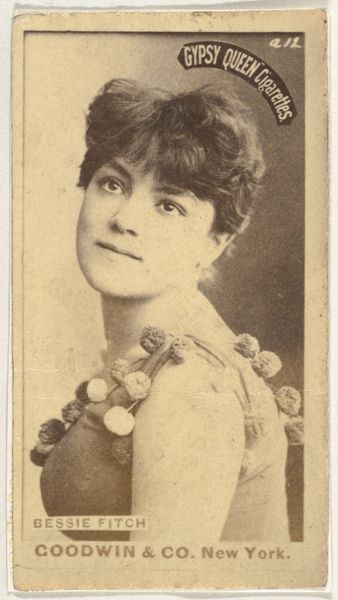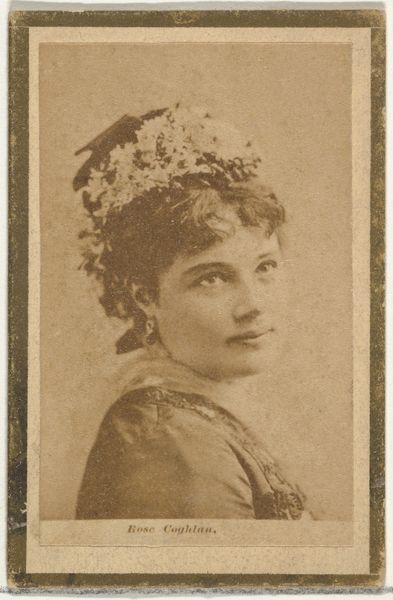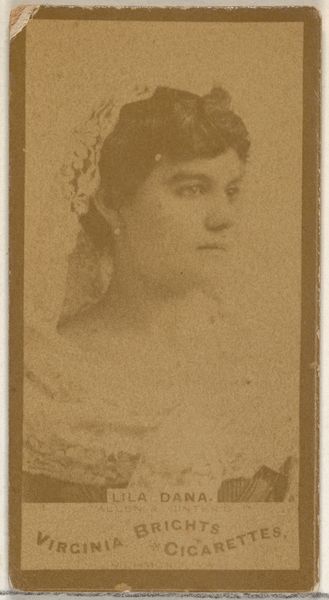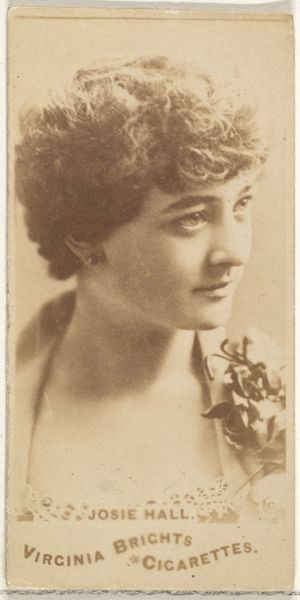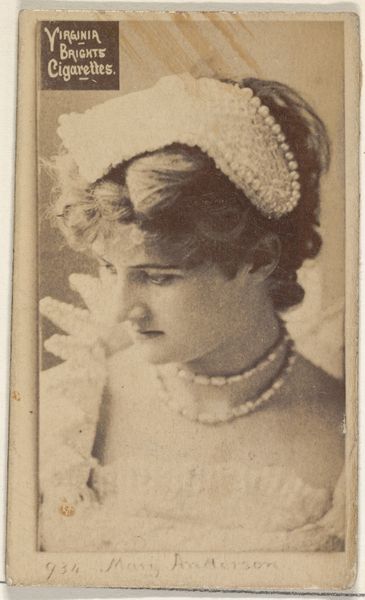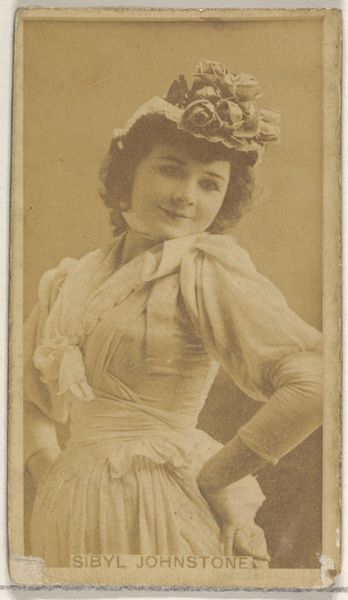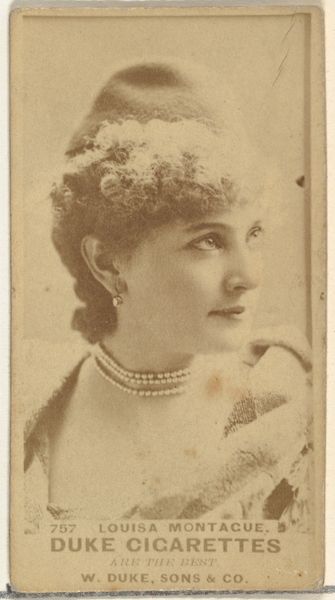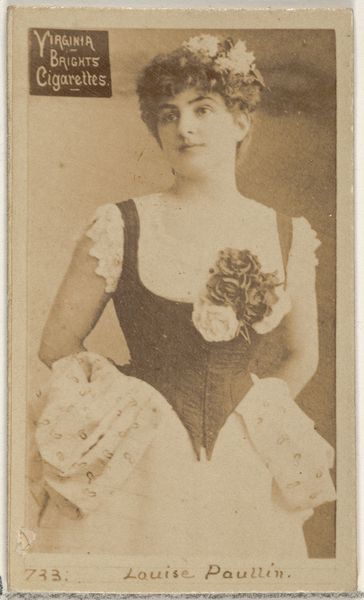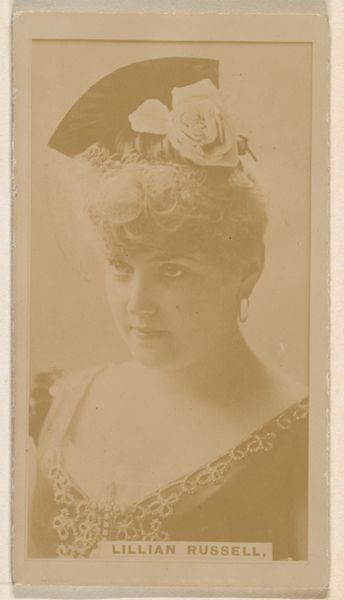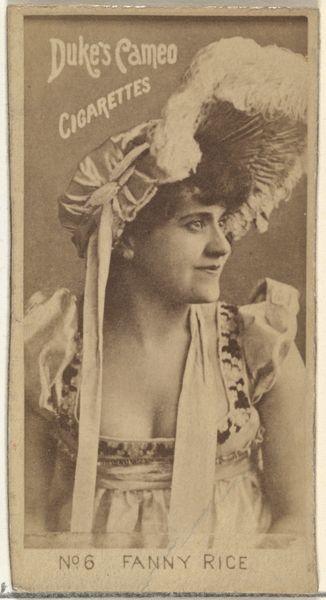
From the Actors and Actresses series (N45, Type 4) for Virginia Brights Cigarettes 1885 - 1891
0:00
0:00
drawing, print, photography
#
portrait
#
drawing
# print
#
photography
Dimensions: Sheet: 2 3/4 x 1 3/8 in. (7 x 3.5 cm)
Copyright: Public Domain
Curator: What a dreamy visage! She reminds me of a silent film star, gazing wistfully into the middle distance. Editor: Indeed! We're looking at a card from Allen & Ginter's "Actors and Actresses" series, dating from between 1885 and 1891, a photographic print designed as a cigarette card for Virginia Brights. Curator: Cigarette cards! I'm immediately thinking of little boys trading them in the schoolyard like Pokémon cards. Only, instead of Pikachu, they’re bartering for beauty. What do you make of its size and composition? Editor: Its diminutive scale belies the larger social currents it reflects. These cards, printed en masse, participated in the commercialisation of fame and feminine ideals. Curator: I can just imagine how quickly such items must have proliferated; tucked into every packet! There’s a subtle sepia tone at work too— almost like a half-remembered dream. Editor: Precisely! The sepia is critical. It connects her not just to photography but to its aspirations, both historical and ideological, to capture and embalm reality. The woman is unnamed but her image worked to symbolize Victorian conceptions of beauty. These representations rarely included working-class or non-white women and therefore shaped cultural expectations and social biases. Curator: And with such a specific purpose— an advertisement, no less. She’s transformed into a kind of brand ambassador for feminine ideals. But what I see too, or what I imagine I see, is the beginning of the celebrity machine— those cogs whirring already, turning women into things... Editor: I couldn't agree more. What's more unsettling is that these 'objects' reinforced power dynamics which situated whiteness as inherently more desirable and profitable within commercial spaces. These images encouraged both desire for consumption as well as harmful social comparisons between diverse identities. Curator: She’s just a little slip of image now but resonates so powerfully in context. Editor: Indeed, something so seemingly simple becomes a powerful entry point to examine issues of race, class, gender and power, all through the looking glass of consumer culture.
Comments
No comments
Be the first to comment and join the conversation on the ultimate creative platform.

